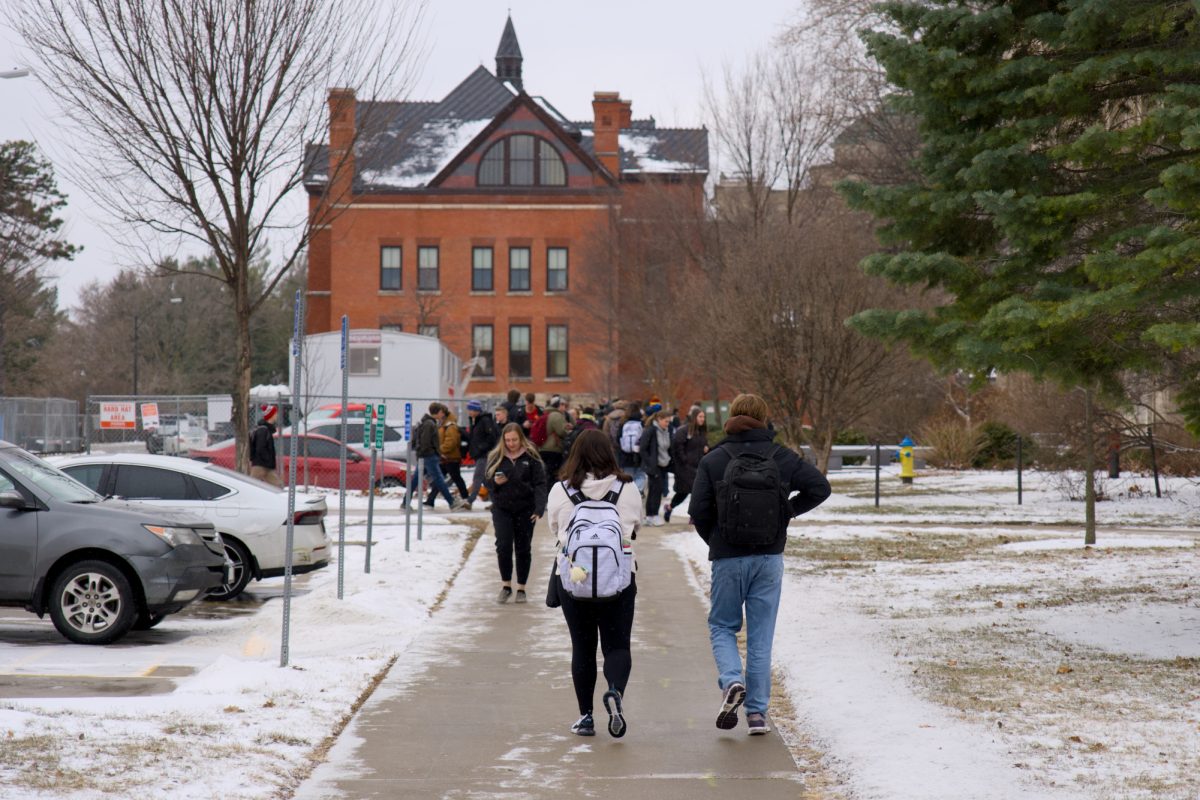Students still teaching despite debt concerns
April 12, 2006
A recent study has found that a significant number of starting teachers and social workers from public universities have too much debt to survive in their jobs.
The state Public Interest Research Groups conducted the study nationwide, and the results were released locally on April 5 by Iowa State’s student government activism group, ActivUs.
The study found 36.1 percent of public college students entering teaching and 37 percent of public students entering social work have unmanageable debt when they begin.
“Public servants like teachers and social workers are vital to the success of our communities,” said Devan Hartman, Student Debt Alert campaign coordinator for ActivUs, in a press release. “Unfortunately, high student loan debt can prevent many students from embarking on these critical – yet low-paying – jobs.”
Drue Robertson, senior in elementary education, said she has three years of out-of-state tuition covered with student loans, and one more year to go. She said she was aware of the risks of going into a low-paying job such as teaching, and accepts them as just part of the job.
“It’s just going to take that much longer to pay them off,” she said.
Ballard principal John Ronca said his school district is keeping its teachers, despite the small district and low pay. In the past six years, Ronca said he has hired 12 new teachers, all of whom stayed.
“They are staying here. We are bucking the trend,” Ronca said. “The intrinsic value of the job here keeps them here.”
Even with job satisfaction, Ronca said making ends meet is still a concern for some of his new teachers. Many take part-time jobs, some on the weekends, but most have them during the summer. Starting teachers also keep roommates and take coaching jobs to keep their cost of living down, he said. Iowa requires that school districts pay their teachers a minimum of $26,000 a year, and Ronca said his starting teachers make $26,500.
“Bottom line, they find a way. I guarantee if their heart is in teaching, they’ll stay,” he said.
According to statistics from the U.S. Department of Education in 2000, the top reason for leaving the profession of teaching was retirement. Twenty percent of teachers nationwide indicated this was the reason they quit. Wanting a better salary was third on the list, claiming 14 percent of respondents.
Robertson said she didn’t think money was a main reason why new teachers quit teaching.
“You do whatever you can do,” she said. “Most people don’t quit because of the money.”
She did say many people she knew planned on leaving Iowa to get better pay. She said she considered returning to her home state of Illinois for a higher salary, as well.
“Some people go to other states because the pay is better,” she said. “You can start up to $10,000 more than in Iowa.”
Tim Taylor, deputy superintendent for Ames Community Schools, said he hasn’t seen many new teachers leave for better pay. However, he said he can see how it may become a growing problem.
“[It’s] not something I can discount either. There are shortage levels,” Taylor said. “However, if they get past the fifth year, they are going to make a career of it.”
Roberta Johnson, ISU director of student financial aid, said there are some options available to students facing high debt and low pay. Although there are no specific loan forgiveness programs for social workers, she said students can defer their payments by proving to the holder of the loan that they are working, but loan payments would be more than 20 percent of their income.
Also, there is an income contingent plan, she said. Students can make payments on a sliding scale dependent on their salary.
“I have seen students stay in good standing and be making $5 to $10 payments,” she said.
There are loan forgiveness programs for teachers, she said, but many require the applicant to be going into a low-income district or into an area of teaching where there is a shortage, such as upper-level math and science courses. This may be a problem for some, she said.
“There are the strings that are attached,” she said. “Oftentimes students may not have the flexibility of that choice.”
Some financial resources for low-income teachers
Iowa Teacher Shortage Forgivable Loan Program: If approved, teachers can get up to $3,000 a year. To be eligible, individuals must teach in a designated teacher shortage area.
Perkins Loans: Teachers can get some loan forgiveness if teaching in an economically disadvantaged area or an area where there is a teacher shortage.
Stafford Loans: Teachers must teach for five consecutive academic years. Individuals can qualify for federal cancellation after each additional year. They have to teach in a federally designated low-income school. They must also be a highly qualified teachers, with an endorsement in the subject area they are teaching.
Apply for economic hardship: Individuals who prove to the holder of their loans that they are working, but not making enough to make loan payments, can defer their payments. Loan payments must be more than 20 percent of their income.
Income contingent repayment plan: Payments can be made on a sliding scale based on the person’s income. Payments as low as $5 can be made.
– Compiled by Kathryn Fiegen






